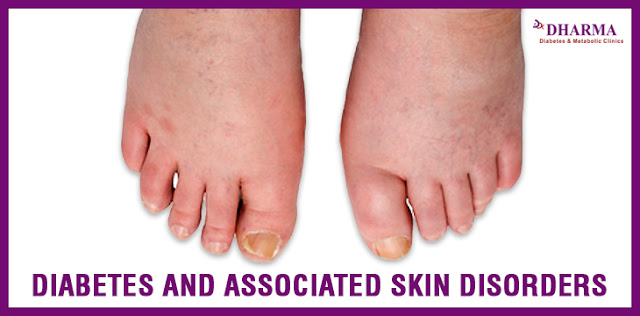Diabetes and Associated Skin Disorders
Diabetes affects many parts of the body. It can also affect your skin and when diabetes affects the skin, it’s often because of blood sugar (glucose) levels are too high. This could mean that you need to consult the Diabetes specialist in Delhi for the treatment of your diabetic affected skin.
Skin disorders caused by Chronic Diabetes:
Now let us learn about some of the warning signs on your skin, that caused by chronic diabetes.
Yellow, reddish, or brown patches on your skin: This type of skin condition begins as small raised solid bumps that look like pimples. When it starts to progress, these bumps turns into patches of swollen and hard skin. The patches on the skin can be yellow, reddish, or brown. You may also observe the surrounding area of the skin has a shiny porcelain-like appearance with visible blood vessels. The skin is itchy and painful and this goes into repeated cycles.
Darker area of skin that feels like velvet: A dark patch of velvety skin on the back of your neck, armpit, groin, or elsewhere starts to appear. This could mean overproduction of insulin in the blood. It is a sign often related to prediabetes.
Hard, thickening skin: When this develops on the fingers, toes, or both, the medical name for this condition is digital sclerosis (sclera-row-sis). You’ll notice tight, waxy skin on the backs of your hands. The fingers become stiff and difficult to move. If you don’t control diabetes for years, it can feel like you have pebbles in your fingertips. Hard, thick, and swollen-looking skin spreads all over, appearing on the forearms and upper arms. It can also develop on the upper back, shoulders, and neck. Sometimes, this thickening of skin spreads to the face, shoulders, and chest.
There are some cases where the skin over the joints gets thicken, making it difficult to straighten your leg, point your foot, or bend your arm. Wherever it appears, the thickened skin often has the texture of a pale color. This skin problem develops in people who have complications due to diabetes or diabetes that is difficult to treat.
Blisters: Though rare, but people with diabetes can see blisters suddenly appearing on their skin. They may observe large blister, a group of blisters, or both. These blisters tend to form on the hands, feet, legs, or forearms. A blister may look like a serious burn. And unlike the blisters that develop after a burn, these blisters are not painful. The medical terminology for this condition is bullosis (bull-low-sis) diabetricorum. Sometimes, it’s called diabetic bullae (bull-lie).
Open sores and wounds: Chronic high blood sugar (glucose) can lead to poor circulation and nerve damage. You may have developed these if you’ve had uncontrolled diabetes for a long time. Which have led to poor circulation and nerve damage and can make it hard for your body to heal wounds. This is especially true when on the feet. These open wounds are called diabetic ulcers.
Outbreak of small, reddish-yellow bumps: sometimes bumps appear and they often look like pimples. Unlike pimples, they soon develop a yellowish color. You’ll usually find these bumps on the buttocks, thighs, crooks of the elbows, or backs of the knees. They can form anywhere though. No matter wherever they form, they are usually tender and itchy.
Extremely, dry itchy skin: If you have diabetes, you’re more likely to have dry and chapy skin. High blood sugar (glucose) is the major cause of it. A primitive skin infection or poor circulation, these could also contribute to dry, itchy skin.
Resource Box:
Diabetes specialist in Delhi may be helpful for you in combating the premature diabetic symptoms. You can save yourself from worst skin disorders if you are able to control your diabetes.
Content Source: https://dharmadiabetesclinic.wordpress.com/2019/05/30/diabetes-and-associated-skin-disorders/



Comments
Post a Comment